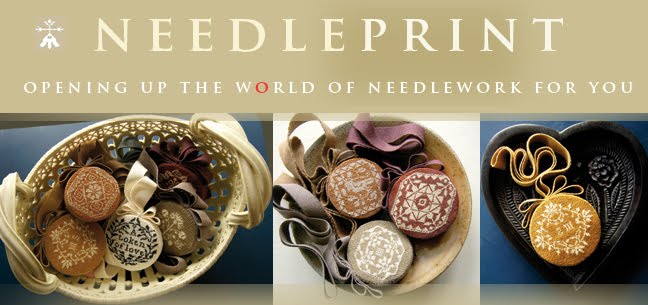 Louisa Pesel is a special hero of mine. Many years ago I fell in love with her notebooks and her meticulously hand drawn charted designs of antique needlework. She was saying, 'Just look at this, isn't this design wonderful?' Having travelled to many countries in the near East, she wanted all the world to see what she, by her good fortune, had seen. I think it is so important to keep alight the torch she lit. The more so, perhaps, since she was an old girl of my school in Bradford. How strange to think that the school founded in 1875 and something of a scandal since it proposed to teach girls mathematics and classics instead of the usual domestic arts, should have been, in its turn, slightly astonished to turn out a scholar with a passion for design and needlework.
Louisa Pesel is a special hero of mine. Many years ago I fell in love with her notebooks and her meticulously hand drawn charted designs of antique needlework. She was saying, 'Just look at this, isn't this design wonderful?' Having travelled to many countries in the near East, she wanted all the world to see what she, by her good fortune, had seen. I think it is so important to keep alight the torch she lit. The more so, perhaps, since she was an old girl of my school in Bradford. How strange to think that the school founded in 1875 and something of a scandal since it proposed to teach girls mathematics and classics instead of the usual domestic arts, should have been, in its turn, slightly astonished to turn out a scholar with a passion for design and needlework.
Having first been a designer at the Royal Hellenic School of Needlework and Laces in Athens, she became its director until she returned home in 1907. During the war she was instrumental in founding the Khaki Handicrafts Club to aid soldiers suffering from shell-shock. They worked to her design this altar superfrontal, in cross stitch on linen. The design is culled from Louisa's study of Greek Island patterns. When complete it was used for the soldiers' services at the Abram Peel Hospital, opened in 1915 as a special neurological hospital. In 1920 Louisa Pesel became the first president of the Embroiderers' Guild. Though her later life was spent in Winchester, her heart must have remained in the North - her extensive collection of needlework examples acquired while travelling, was left to the Clothworkers and is now in the University of Leeds International Text Archive. To see this altar frontal visit Bradford Cathedral before March 6th. More from Bradford tomorrow.














.jpg)
.jpg)
.jpg)
.jpg)























 And it has a long history on the Indian subcontinent, from there it was transported by the various European East India Trading companies to Europe via the fabulously new embroidered muslins of India and the Arabian Gulf. You only have to visit the Asian Textile Gallery at the Victoria and Albert Museum to see the scale of some of these embroideries - the hours of work and life consumed made feasible only by cheap labour. Here you can see that there is no bar to age or sex in the profession and instead of the work being stretched and laced on a rectangular frame or held within a circular frame, it is laced on a large circular frame which gives it even more of the drum quality from which it takes its name - tambour.
And it has a long history on the Indian subcontinent, from there it was transported by the various European East India Trading companies to Europe via the fabulously new embroidered muslins of India and the Arabian Gulf. You only have to visit the Asian Textile Gallery at the Victoria and Albert Museum to see the scale of some of these embroideries - the hours of work and life consumed made feasible only by cheap labour. Here you can see that there is no bar to age or sex in the profession and instead of the work being stretched and laced on a rectangular frame or held within a circular frame, it is laced on a large circular frame which gives it even more of the drum quality from which it takes its name - tambour. 






